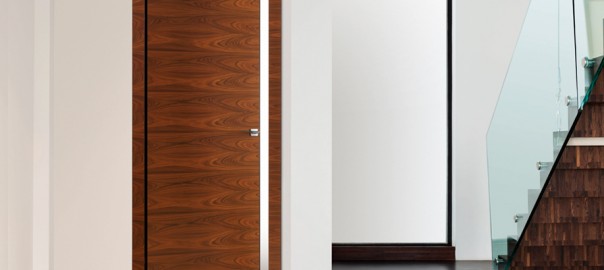If minimalism and modernity are the sine qua non in the choice of furnishings for your rooms, even the interior doors will necessarily have to pass the test.
In these cases, whether you are furnishing a newly created environment or renovating an apartment or an existing office, your decision will focus on minimalist and technologically advanced interior doors.
Whatever the choice, it will always be essential to carefully assess the available proposals, in terms of lines, materials, performance and technology. Remember in fact that interior doors, with their essential functions to separate and connect rooms, are an architectural and ornamental element of exceptional importance.
Among the various types of interior doors which are eligible candidates for minimalist environments there is the so-called door flush to wall, with invisible hinges and frames. It is an architectural element whose strength relies entirely on the concept of neutrality.
The interior door flush to wall is an invisible door: it merges with the environment and it blends into the wall surface in which it is inserted. It is flush to wall and, if offered with an exclusive finish, a decoration or a special coating, it is nearly a modern masterpiece.
Interior doors flush to wall: between design and formal rigour
In the past, all the interior doors of an environment were identical while nowadays new trends combine a higher concept of heterogeneity: the door flush to wall can therefore be the one and only in an environment, installed not only to connect rooms but also to represent a different piece of furniture in that context.
We could almost define the door flush to wall as the antithesis of the classic swing door: if in one everything seems to disappear, in the other every detail is visible and impossible to ignore, from the panel to the hinges. If in the swing door the division of the rooms is the main task, the door flush to wall has an absolute formal rigour and its task is a complete continuity of the surfaces.
Elegance and uniformity are therefore the essential elements of the doors flush to wall. You can choose them with the same colour shades of the walls or, alternatively, with different finishes and colours, even bright, without altering the incredible and innate ability to disappear from sight almost inherent in their nature. Varnishing, printing, finishing to put them in evidence can turn them into design elements, but their discretion, their formal rigour, will never be called into question.


